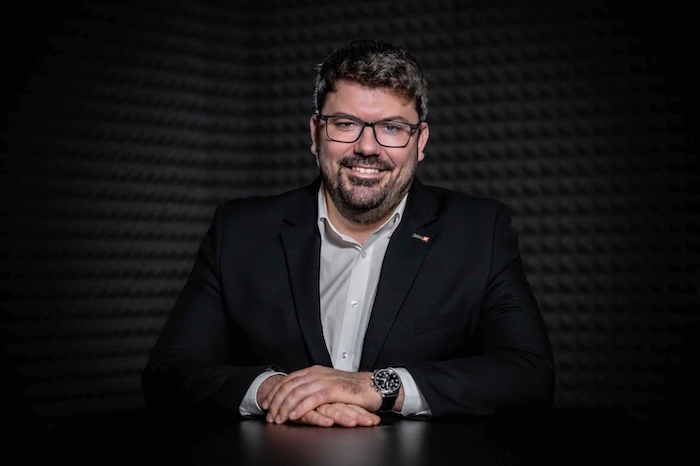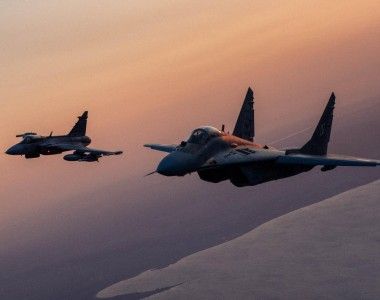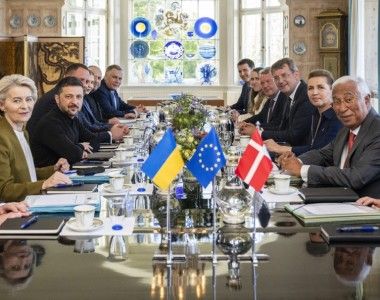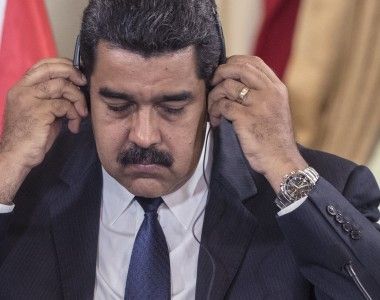ZAPAD in Belarus. Gen. Klisz: We Are Preparing for a Surge at the Border [Interview Part 2]
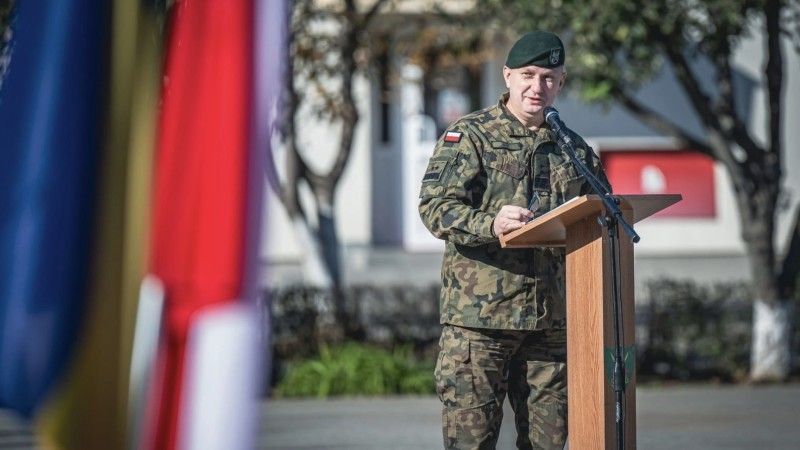
Photo. senior sergeant Rafał Samluk, DORSZ Combat Camera Team
Elements of the Eastern Shield—which we are assembling and will continue to assemble not only along the Belarusian direction but also along the Russian one—are designed to make us see further and, above all, understand more. This among other things was explained in an interview with Defence24.pl by Lieutenant General Maciej Klisz, Operational Commander of the Armed Forces.
Jędrzej Graf: We are in a dynamic international situation that affects the development of threats in our immediate environment. One of the foundations of our security, alongside our own armed forces and engagement in NATO, is the alliance with the USA. General, I would like to ask: are there any changes in military-level relations with the Americans? Politically, there has been a change. With the new administration, can we speak of a new military approach?
Maj. Gen. Maciej Klisz, OPSCOM, Polish Armed Forces: Of course, I am very closely monitoring what is happening on the political and strategic levels. However, on the military level, my operational level, I do not see any changes. We have had, have, and I assume will continue to have contacts. Currently, in Poland we have over 10,000 soldiers from various countries, of which 90 percent are American, and this presence has been maintained for quite some time.
In Poland there is the V Corps, division headquarters, brigade battle groups—ABCT; in Bemowo Piskie there are NATO elements—the Americans as part of the Forward Land Forces, and the Americans are participating in the Air Policing mission. On the operational level I do not see any changes today, and likewise at the planning level.
I am convinced that the priorities for the new administration will be established by the national security strategy. Historically, various presidents have set their priorities differently, because usually the threats listed are, in a 4+1 or 3+2 formula: Russia, Iran, North Korea, China, and terrorism. In my estimation, priority number one will be China. If China becomes the priority in the security strategy, it is natural that the focus will shift to the Pacific, and that is happening before our eyes. This does not change the fact that so far there are no signals that should worry me regarding the American grouping in Poland.
From our perspective, a potential alarm signal could be the withdrawal of division and corps headquarters, limiting logistics. We are able to transport soldiers very quickly if we have the equipment on site, because here our limitations are infrastructure, roads, ports, but also the headquarters and logistics. As long as these key elements are not withdrawn, we have no major reasons for concern. And on the strategic level, we are waiting for the publication of the premises of the American national security strategy—I would be personally surprised if China does not appear at the top.
Let’s talk about the border. The Prime Minister stated that the modernization of barriers, both electronic and physical, increased the effectiveness of detecting illegal crossings to over 90 percent. How does this look from your perspective?
In February there were 500 attempted crossings; on March 28 there are over 2,000—in other words, a fourfold increase. The modernization of the barrier is very important. The latest changes have given us far greater capabilities because the system has been upgraded both physically and electronically. Improving the physical barrier shortens reaction time, and thanks to the electronic system, we have much greater situational awareness. Seeing a threat earlier allows us to assess and react appropriately. Nevertheless, we are constantly dealing with crossings, because no physical barrier can be fully effective. Especially in situations where on the other side of the barrier there is complete freedom to prepare for attempts to breach. Of course, the river sections are also a bottleneck. These are groups attacking the border in a specialized manner.
And the narrative about poor people seeking democracy and peace in Europe – only the toughest now seem to believe in it. We already have extensive, four-year-long experience. The same modus operandi was observed a year ago before the June elections to the European Parliament European Parliament. I expect that March, April, and May will be the peak period of pressure on the Polish border, solely for political reasons—to destabilize the state.
On top of that in 2025 there is the ZAPAD-25 exercise planned to take place in Belarus. Whether we like it or not, we are preparing for a large surge at the Polish border. In my view, a good solution is suspending the right to asylum. I know how badly that sounds coming from a soldier, but processing asylum applications in the heart of the Białowieża Forest by migrant representatives simply does not make sense to me. It is fortunate that we have the law, the president’s signature, and that the Council of Ministers« ordinance has been published.
I will ask one more thing about infrastructure, because the Border Guard is the operator, yet the armed forces are also at the borders. Have these works on the barriers produced the desired effect?
This ties in with what was discussed during the visit of Prime Minister Tusk, Deputy Prime Minister Kosiniak-Kamysz, and Minister Siemoniak to the border. Our effectiveness has increased significantly, both as the army and as the Border Guard. We have changed our tactics; we have developed methods, tactics, and operational procedures. We operate effectively, even if someone manages to break through. Hence the effectiveness mentioned by Prime Minister Tusk—over 98 percent, which is indeed the case.
We have built an entire system. As I said earlier, the barrier has been comprehensively modernized, and that yields results. Firstly, we detect threats earlier; secondly, we can hold migrants at the barrier longer. Moreover, together with the Border Guard, we have prepared techniques, currently implemented by the 12th Mechanized Division operating at the border, which is based on solutions from the 18th Division. We are already preparing the 16th Division to take over—it is how it looks from the perspective of the Polish Armed Forces. Of course, this also places a burden on the military, but with several thousand attempted border crossings every month, there is no alternative.
Should a similar barrier also be built on the other eastern borders? There are some unofficial voices calling for that.
These are questions above the head of a soldier, for political decision-makers. In my opinion, at the moment there is no such need. One might also ask whether instead of a barrier, one should perhaps create a surveillance system on the Polish–Lithuanian border, because the Lithuanian–Belarusian and Latvian–Belarusian borders are also under pressure.
I asked that question because the flagship project is the Eastern Shield, which—according to the announcements—will also cover segments of the entire eastern border. From your perspective, should what has been built along the border and the Eastern Shield constitute one system, or separate systems? Is the Eastern Shield still only in the conceptual phase?
In truth, the Eastern Shield is a project that overlaps with what we are doing on the border. As an operational commander, I face many challenges with it. Geography unites us. I lead the Secure Podlasie operation; in the same area, works related to the Eastern Shield are carried out by the General Commander. I am pleased that the head of General Staff of the Polish Armed Forces is coordinating the actions between us.
I see it as joint, combined efforts. In the military aspect, you cannot separate the actions on Podlasie from those undertaken as part of the Eastern Shield. The Eastern Shield is an operational concept. Deputy Prime Minister Władysław Kosiniak-Kamysz has stated that this project cannot be completed in four years. This project will last. Why is that? Consider the issue of planting trees. Trees need 15–20 years to become an obstacle and not just a copse. The purpose of the Eastern Shield is not to stop an enemy, because no engineering barrier is capable of stopping an opponent—they will eventually overcome it. The Eastern Shield is a means to delay, channel, and centralize.
I understand that it is supposed to be an entire belt laden with sensors, where we also collect intelligence and information—it is meant to serve as the „eyes,” as well as an information-processing system.
I’m glad you mention that, because from the operational commander’s point of view, the problem is not currently »seeing«. My greatest challenge is »understanding«. This is also about building awareness, the so-called Pattern of Life. If the Russians leave a rocket launcher on the same spot every Thursday, that does not worry me at all. What worries me is if they appear on a Wednesday. That is my main challenge in the Operational Command. The elements of the Eastern Shield that we are installing and will install not only on the Belarusian front but also on the Russian direction are meant to enable us to see further and, above all, to understand more. That is the main point.
However, many people interpret the Eastern Shield as a kind of Maginot Line. History has shown, though, that even the Maginot Line—which was thought to be impregnable—was defeated cleverly by being outflanked through the Ardennes.
It is also about using modern technologies, advanced perimeter systems. Local communities have to function, and the economy must operate. All these factors have to be combined.
This is also an important topic, as there are certain disputes. For example, from the military’s point of view, we would not want front roads to be built running in an east–west direction, because while they are useful, the enemy could also exploit them. We lack north–south roads, which are crucial. Local authorities are more interested in the east–west direction due to economic reasons, as that is how transport flows. North–south roads are less useful. That is only one of many aspects.
Of course, a big challenge is property rights—what the military or the state can do and where it can go, and where it should not. These are serious challenges, but normal in a democratic state that respects the property rights of its citizens. As the military, we need land, but on the other hand, there is property law. We are aware of it, we deal with it in the Secure Podlasie operation, where local authorities are not happy that heavy military vehicles are driving on their roads. But since we are there, we have to move. This is achievable thanks to good military contacts and an increasing understanding among the people. We ensure security, and that comes at a price.
Road infrastructure is significant not only for the Eastern Shield. One of NATO’s priorities is Military Mobility. There is also a highlighted issue regarding the Polish Army’s ability to make quick redeployments. The railway network is underdeveloped, and road transport is therefore crucial. If we look at how the weight of vehicles is increasing—not to mention Abrams tanks, which are very heavy, K9, Krabs, K2 tanks—there is a need for systems to quickly transport wheeled equipment, including a wartime reserve. As demonstrated in Ukraine, Russia will target logistics.
Geographically, mobility is not a Poland’s strong side. From west to east and from south to north, we have two major rivers—the Oder and the Vistula. Looking at the map, we can see how many crossings there are on the Oder and on the Vistula. Hence, the measures devised by me and the planners on how to deal with that. The Russians have the same maps as we do; they know exactly where they can slow us down. The condition for our success and effective deterrence will be our ability to receive a battle formation. In my opinion, that is key to the future development of the situation.
If we do not deploy a good, proper operational formation, we will certainly lose. Russia knows that; we know that too. There is nothing new here. That is why we must build capabilities that will allow us to efficiently redeploy troops, including heavy units. In a situation of threat, we will have to provide transport and logistics for hundreds thousands of heavy combat vehicles, both Polish and allied. These capabilities are crucial for us in order to receive the proper battle formation. And that is the key to the success of the defensive operation.
Reading the strategic study of the defence plan against the Germans by Mossor and Kutrzeba from 1937, I completely share their dilemmas. The destruction of our opponents back then was part of the talent and craftsmanship of the commanders and leaders, but unfortunately the challenge was what they called the material war—the capacities of industry. I would like this conversation to show that war is economics and that war cannot be conducted without a proper defence industry, as evidenced by Ukraine. Of course, there are supplies and donations through J-TOWN, but also the development of our own defence industry. And the question remains: where is „good enough” and where is the „death star.”
I would like to ask whether the ANAKONDA exercise will take place this year and how we are preparing for the Russian–Belarusian ZAPAD exercise?
No, ANAKONDA is scheduled for 2026, and the codename will change. According to the guidelines from the General Staff of the Armed Forces, exercises have double-component codenames. BRAVE HUSSAR 26 will be one, and this year in November there is JESION 25—a command and staff exercise.
ZAPAD-25 is planned for September. The Russians, in order to avoid overt violation of the Vienna Treaty, are dividing the exercise into several phases. Officially, they report a number of 13,000 soldiers, although they do not have to announce it. However, we expect that in this series of exercises—just like in every edition of the ZAPAD series—there will be participation of a significantly larger number of soldiers and formations, including an exercise of strategic nuclear forces, with cross-firing of ballistic missiles from east to west.
We anticipate the full scale of the ZAPAD exercise this year and are already keeping a very close watch on it. I am in contact with operational commanders from the entire region—the Baltic states, Nordic countries, Germany, and the United Kingdom. We are looking very broadly at ZAPAD-25 and preparing. The exercise will be one of the topics at the Operational Commanders« meeting in June in Gdynia. I have asked my colleagues to share their comments and assessments.
But in your view, are these standard exercises, a matter of strategic communication, rather than a prelude to another aggression?
ZAPAD-2025 will take place after ZAPAD-2021, but I do not see an analogy with the sequence of: an exercise in 2021 and an attack in the winter of 2022. I do not assume that ZAPAD-25 in the fall is a precursor to an attack on Poland in the spring of 2026. It is part of the standard Russian preparations.
We see and understand what is happening on the Russian side. They are sending us signals and expect that we will interpret them correctly. We, too, send them signals and count on them understanding them well. We are presenting a wide range of deterrence—not only deterrence by denial („don’t do it, because you’ll get burned”) but also deterrence by punishment—defence by punishment („don’t do it, because we will punish you”). We observe the situation and we are prepared; there are no signals that this exercise is connected with a direct threat.
Thank you for this conversation.
